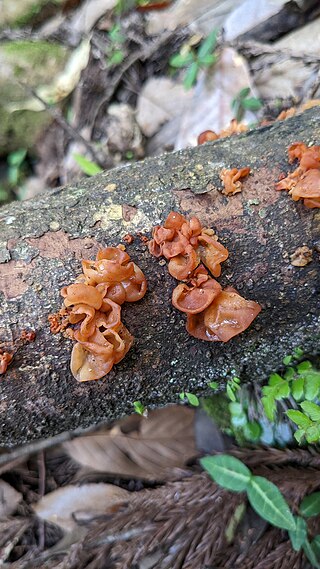Nectria radicicola is a plant pathogen that is the causal agent of root rot and rusty root. Substrates include ginseng and Narcissus. It is also implicated in the black foot disease of grapevine. It is of the genus Nectria and the family Nectriaceae. N. radicicola is recognizable due to its unique anatomy, morphology, and the formation of its anamorph Cylindrocarpon desructans.
Penicillium adametzioides is an anamorph fungus species of the genus of Penicillium, which was isolated from decayed Grapes in Cheongsoo in Korea.
Penicillium cainii is a fungus species of the genus of Penicillium which was isolated from soil in Korea.
Penicillium canariense is a fungus species of the genus of Penicillium.
Penicillium austroafricanum is a fungus species of the genus of Penicillium
Penicillium alfredii is a fungus species of the genus of Penicillium which is named after Alfred P. Sloan.
Penicillium clavistipitatum is a fungus species of the genus of Penicillium.
Penicillium ellipsoideosporum is a species of the genus of Penicillium which was isolated in China.
Penicillium georgiense is a species of the genus of Penicillium which was isolated from soil of a sandy beach from the Batu Ferringhi beach on the Penang Island in Malaysia and it was also isolated soil of a peanut field in Georgia in the United States.
Penicillium maximae is a species in the genus Penicillium which is named after Queen Máxima of the Netherlands.
Penicillium menonorum is a monoverticillate, non-vesiculate species of the genus Penicillium which was isolated from rhizosphere soil in Korea. Penicillium menonorum can promote plant growth and improve soil fertility
Penicillium sclerotigenum is a species of fungus in the genus Penicillium. Described as new to science in 1955, it was first isolated from tubers of Chinese yam found in Japan. It is also associated with blue mold of yam in Korea. A DNA biosensor method for detecting the fungus in yam has been reported. The anti-insect compound sclerotigenin was reported from the fungus in 1999.
Penicillium paneum is a species of fungus in the genus Penicillium which can spoil cereal grains. Penicillium paneum produces 1-Octen-3-ol and penipanoid A, penipanoid B, penipanoid C, patulin and roquefortine C
Penicillium paradoxum is a species of fungus in the genus Penicillium. Penicillium paradoxum grows on dog dung and is phototropic, and has a characteristic odour. Unusual for Penicillium, the fungus has an Aspergillus-like conidial head, not a penicillus.
Penicillium pimiteouiense is a species of fungus in the genus Penicillium which was isolated from sandy beach soil from the Penang Island in Peninsular Malaysia.
Penicillium raphiae is a species of fungus in the genus Penicillium which was isolated from agricultural soil of the Ulleung Island in Korea.
Penicillium steckii is a species of fungus in the genus Penicillium which produces citrinin, tanzawaic acid E, tanzawaic acid F.

Cladosporium cladosporioides is a darkly pigmented mold that occurs world-wide on a wide range of materials both outdoors and indoors. It is one of the most common fungi in outdoor air where its spores are important in seasonal allergic disease. While this species rarely causes invasive disease in animals, it is an important agent of plant disease, attacking both the leaves and fruits of many plants. This species produces asexual spores in delicate, branched chains that break apart readily and drift in the air. It is able to grow under low water conditions and at very low temperatures.

Loweomyces fractipes is a species of poroid fungus in the family Steccherinaceae, and the type species of the genus Loweomyces. It is a widely distributed species, found in North America, Europe, Central America, South America, and Korea.

Sirobasidium magnum is a species of fungus in the order Tremellales. Basidiocarps are gelatinous, lobed to foliose (leaf-like) and appear to be parasitic on ascomycetous fungi on wood. No other Sirobasidium species has such large fruit bodies. The species was originally described from Indonesia, but has been reported from elsewhere in Asia and also in Australia and North America.


